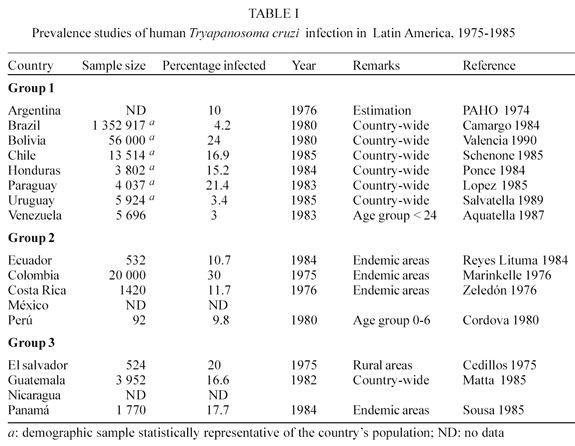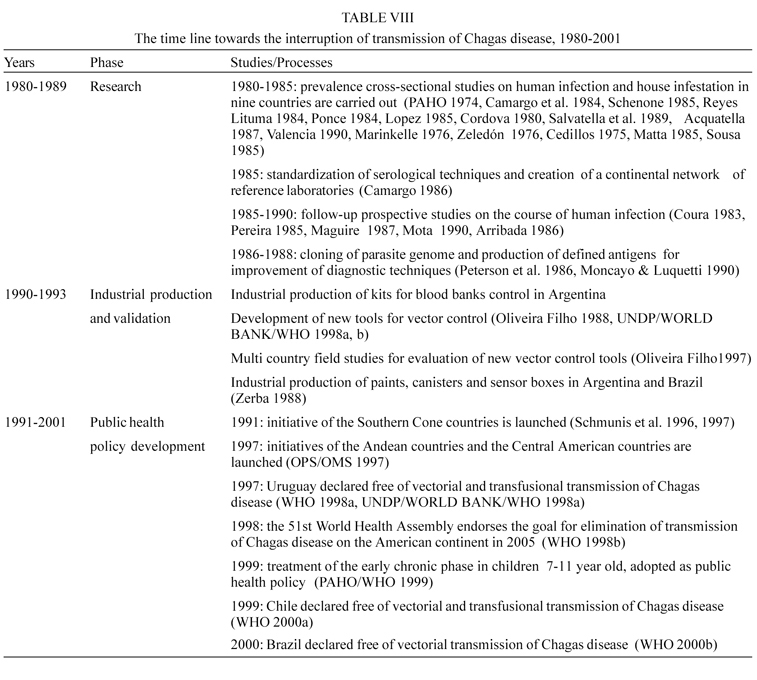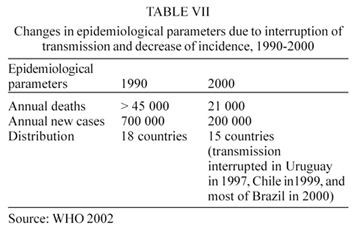Chagas disease, named after Carlos Chagas who first described it in 1909, exists only on the American Continent. It is caused by a parasite, Trypanosoma cruzi, transmitted to humans by blood-sucking triatomine bugs and by blood transfusion. Chagas disease has two successive phases, acute and chronic. The acute phase lasts 6 to 8 weeks. After several years of starting the chronic phase, 20% to 35% of the infected individuals, depending on the geographical area will develop irreversible lesions of the autonomous nervous system in the heart, esophagus, colon and the peripheral nervous system. Data on the prevalence and distribution of Chagas disease improved in quality during the 1980's as a result of the demographically representative cross-sectional studies carried out in countries where accurate information was not available. A group of experts met in Brasília in 1979 and devised standard protocols to carry out countrywide prevalence studies on human T. cruzi infection and triatomine house infestation. Thanks to a coordinated multi-country program in the Southern Cone countries the transmission of Chagas disease by vectors and by blood transfusion has been interrupted in Uruguay in1997, in Chile in 1999, and in 8 of the 12 endemic states of Brazil in 2000 and so the incidence of new infections by T. cruzi in the whole continent has decreased by 70%. Similar control multi-country initiatives have been launched in the Andean countries and in Central America and rapid progress has been recorded to ensure the interruption of the transmission of Chagas disease by 2005 as requested by a Resolution of the World Health Assembly approved in 1998. The cost-benefit analysis of the investments of the vector control program in Brazil indicate that there are savings of US$17 in medical care and disabilities for each dollar spent on prevention, showing that the program is a health investment with good return. Since the inception in 1979 of the Steering Committee on Chagas Disease of the Special Program for Research and Training in Tropical Diseases of the World Health Organization (TDR), the objective was set to promote and finance research aimed at the development of new methods and tools to control this disease. The well known research institutions in Latin America were the key elements of a world wide network of laboratories that received - on a competitive basis - financial support for projects in line with the priorities established. It is presented the time line of the different milestones that were answering successively and logically the outstanding scientific questions identified by the Scientific Working Group in 1978 and that influenced the development and industrial production of practical solutions for diagnosis of the infection and disease control.
Chagas disease; Trypanosoma cruzi infection; control; interruption of transmission
















